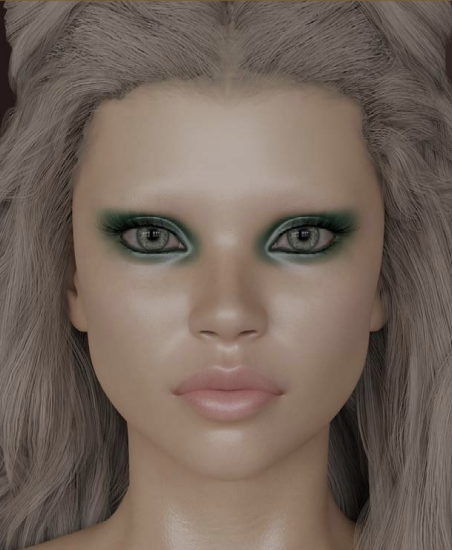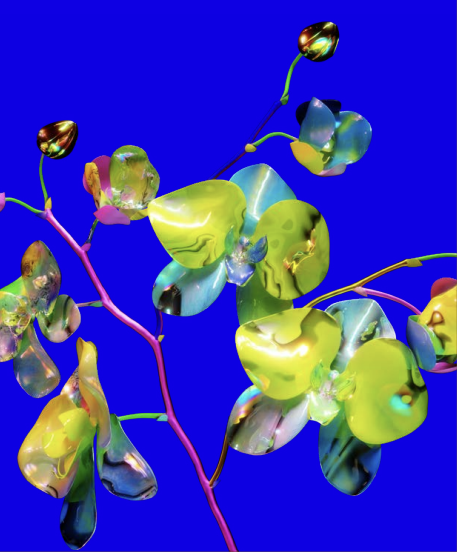Beijing, China – August 10 , 2022 – The world of design is getting closer to reality with the rise of 3D technology. Whether in fashion, art, product design or games, the importance of 3D design is constantly increasing. Set off another wave of revolution in visual culture. Adobe and the creative website It’s Nice That (INT) recently released a 3D trend report. By studying the current creative works in the global 3D design field, it summarizes the current trend preferences of the 3D industry: “Re-imagining reality”, that is, using inspiration from life to Objects and elements in realistic design are regrouped to express themselves.
– Objects that upend everyday life : 3D design is proving that those things that people take for granted are often the inspiration for the most surreal and valuable works. Familiar objects combined with creativity and designers’ perspectives on current events shape a world of possibilities.

Thai artist Saratta Cheungsatiansup uses 3D to show modern culture
– Extremely realistic avatars : From games to movies, simulating humans has been a major use of 3D design in modern culture. Over the past few years, Adobe has observed that the most striking aspect of the new wave of 3D avatars is the extreme depiction of detail. 3D design allows creators to precisely mimic human body shapes or features, or even textures, such as hair or clothing. In addition, the 3D design can capture imperfections on the skin’s surface, including wrinkles, freckles, dimples and hair.

Berlin-based digital artist Harriet Davey blends tangible and intangible elements in his work
– Stunning textures and materials : 3D designs allow artists to re-imagine real-life structures, which is especially evident in the texture of fabrics. Whether it’s a pine coffee table or a glass bottle, 3D Design is the perfect way to try and experiment with different materials. However, as with our trend of “subverting objects in everyday life”, 3D design can provide the basis for surreal creation despite what appears to be an immediate and practical use.

Hamburg-based artist Vincent Scwenk uses 3D technology to reshape and bring to life fabrics
– Inspiration from nature : When creators use 3D technology to reimagine reality, it’s not just the human world that is being reshaped. From gardens and rainforests to the colors of flowers and even geologically intricate rock formations, nature-inspired creations continue to proliferate as one of the crazes in 3D design.

Chris Golden, an artist from London, shows colorful colors by combining flowers in nature and metal textures in reality
In addition, Adobe also predicted three 3D trends and insights that will emerge in the future, and looked forward to the development of related industries in the future, including:
– Fun and fun styles : In recent years, a large number of designers and creators are using 3D to explore various styles and create a lot of fun. From cartoon animations to vibrant primary colors, or to creating unique characters to express the childishness in your heart, 3D design often brings out the cheerful side of people.
– Visualization of nature and science : From DNA models to mapping weather patterns, from sports scientists showing the movements of different muscles to engineers building models of different muscles, 3D design is revolutionizing the visual language of scientific innovation. The applications and implications of this will be enormous, and for scientists, 3D designs can easily visualize their materials with a level of accuracy and detail previously unattainable. For others, it means the opportunity to learn about a world that was previously inaccessible. In the world of science and technology, 3D design is not only an illustration tool, but a learning platform.
– Maximalism: Artists and designers working in 3D are imagining as many possibilities as possible. Maximalism is one of the fastest growing trends, with visual artists using 3D design to create works full of detail, color and texture. Often the most complex 3D works are taken from artificial environments such as landscapes and rendered to provide virtual backgrounds for photo shoots, or directly form the work itself. These 3D works are part science fiction, part hallucination, and push 3D design to the most vivid extreme.
In the era of 3D design becoming more and more popular, designers need versatile and easy-to-use 3D design tools to complete their creations. Apps like Adobe Substance have the ability not only to build worlds, but to accurately reproduce what we see, touch and experience every day. Designers can use Adobe Substance 3D to shape, add texture and display their 3D works, easily and effectively control the effects they want to create at every stage of the 3D production process, and fully turn digital assets into reality.
This article is reproduced from: http://www.guokr.com/article/461971/
This site is for inclusion only, and the copyright belongs to the original author.